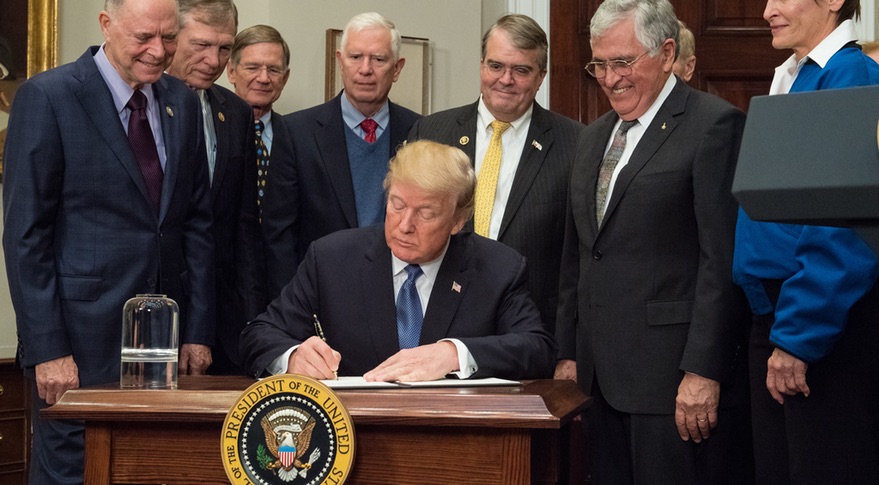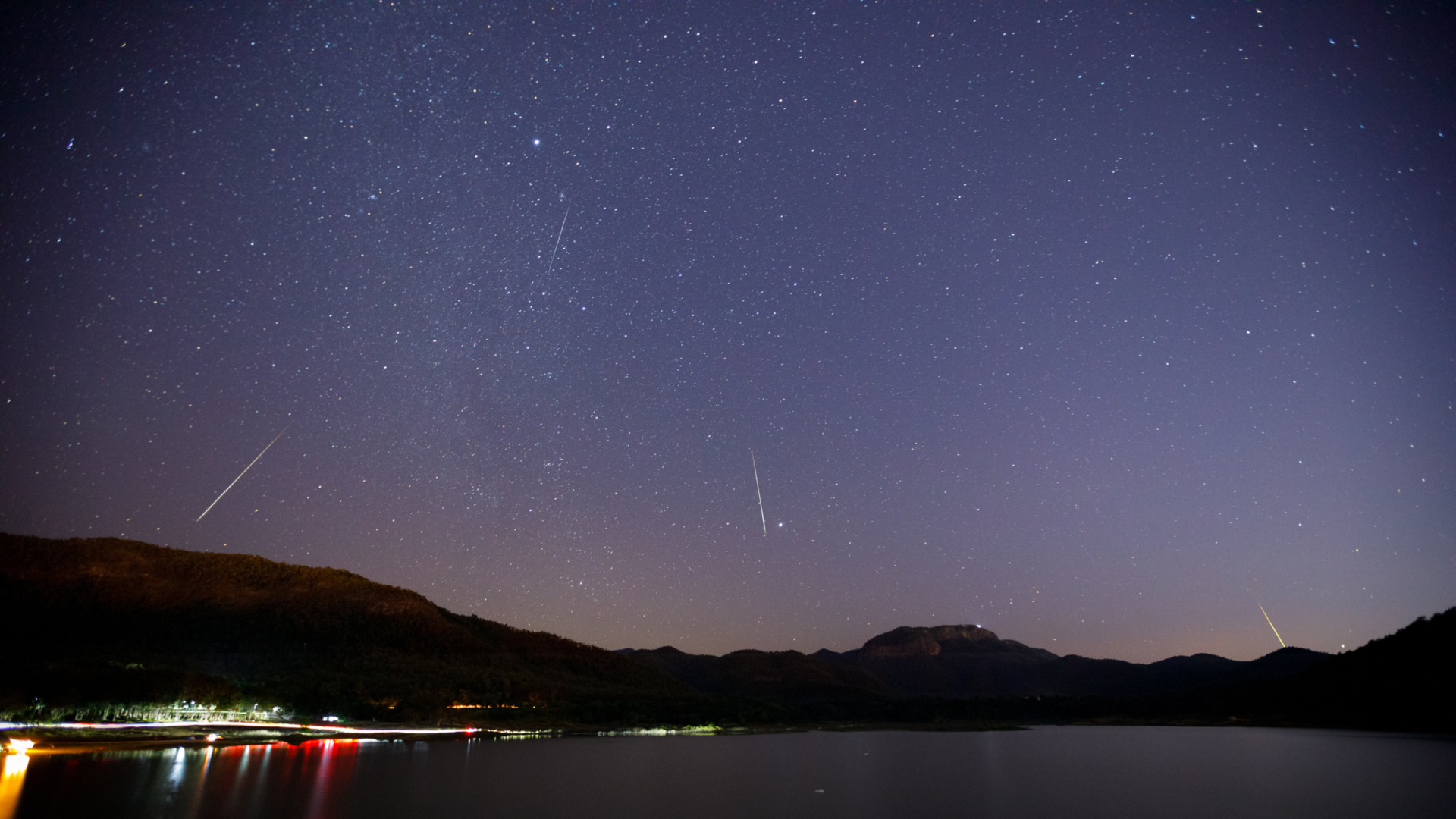Trump Formally Establishes Lunar Landing Goal, But Without Details
NEW ORLEANS — President Donald Trump signed an order Dec. 11 formally directing NASA to send humans back to the moon, but provided no information on schedules or budgets for such an initiative.
In a brief White House ceremony, Trump signed what the administration is calling Space Policy Directive 1, which enacts a recommendation made at the National Space Council meeting in October to make a return to the moon a step towards eventual human missions to Mars.
"The directive I'm signing today will refocus America's space program on human exploration and discovery," Trump said at the event, attended by several members of Congress, other government and industry officials, and current and former astronauts. "It marks an important step in returning American astronauts to the moon for the first time since 1972 for long-term exploration and use." [From Ike to Trump: Presidential Visions for Space Exploration]
"This time, we will not only plant our flag and leave our footprint, we will establish a foundation for an eventual mission to Mars," Trump added.
Vice President Mike Pence, who also spoke at the ceremony, hailed the policy as an early success for the National Space Council, which unanimously approved that recommendation at its first meeting Oct. 5.
"Today's action by President Trump makes that recommendation official national policy," he said. "As everyone here knows, establishing a renewed American presence on the moon is vital to achieve our strategic objectives and the objectives outlined by our National Space Council."
Neither Trump nor Pence, however, offered additional details beyond that policy statement. That included no information on a timeline for a human return to the moon, or estimated costs or other budget information for the initiative.
Breaking space news, the latest updates on rocket launches, skywatching events and more!
NASA, in a statement issued after the ceremony, said that the policy directs the agency to "lead an innovative and sustainable program of exploration with commercial and international partners to enable human expansion across the solar system and to bring back to Earth new knowledge and opportunities." Work on the initiative, it stated, would be reflected in the agency's fiscal year 2019 budget proposal, to be released in February.
"NASA looks forward to supporting the president's directive strategically aligning our work to return humans to the moon, travel to Mars and opening the deeper solar system beyond," NASA Acting Administrator Robert Lightfoot said in the statement.
Other government and industry officials expressed general support for the new policy despite — or perhaps because of — the lack of details about how it will be carried out.
"After 45 years, it is time to return humans to the region of the Moon even as we look toward Mars," said Mary Lynne Dittmar, president and chief executive of the Coalition for Deep Space Exploration, an industry group. Dittmar was among the guests at the White House ceremony.
Eric Stallmer, president of the Commercial Spaceflight Federation and another attendee of the event, said he supported both the overall policy as well as the administration's willingness to consider commercial roles for the effort.
"They would like our input" on how to achieve that policy, Stallmer said in an interview after the event. "The White House and the National Space Council want to work with industry on this."
Individual companies also weighed in. "We support the president and vice president's vision and commitment to return America to the moon," Lockheed Martin said in a statement. "A lunar mission with today's technology would further our understanding of the moon's history and resources. And it will build a strong foundation that will not only accelerate the U.S. to Mars and beyond, it will foster a thriving new space economy that will create jobs and drive innovation here on Earth."
Sen. John Thune (R-S.D.), chairman of the Senate Commerce Committee, noted that the statement aligned with provisions of a NASA authorization bill enacted in March setting Mars as a long-term goal for human exploration. "I applaud the president for his engagement on sending a manned mission to the moon and, as underscored in the bipartisan reauthorization of NASA signed into law earlier this year, eventually to Mars," he said.
Among those in attendance at the event was Harrison "Jack" Schmitt, the Apollo 17 astronaut who landed on the moon exactly 45 years ago on the last human lunar landing to date. "Today, we pledge that he will not be the last," Trump said in his remarks, adding that humans will be landing elsewhere as well.
"What do you think, Jack? We'll find some other places out there? There are a couple of other places, right?" Trump asked.
"Yes, we should," Schmitt responded. "Learn from the moon."
This story was provided by SpaceNews, dedicated to covering all aspects of the space industry.

Jeff Foust is a Senior Staff Writer at SpaceNews, a space industry news magazine and website, where he writes about space policy, commercial spaceflight and other aerospace industry topics. Jeff has a Ph.D. in planetary sciences from the Massachusetts Institute of Technology and earned a bachelor's degree in geophysics and planetary science from the California Institute of Technology. You can see Jeff's latest projects by following him on Twitter.


